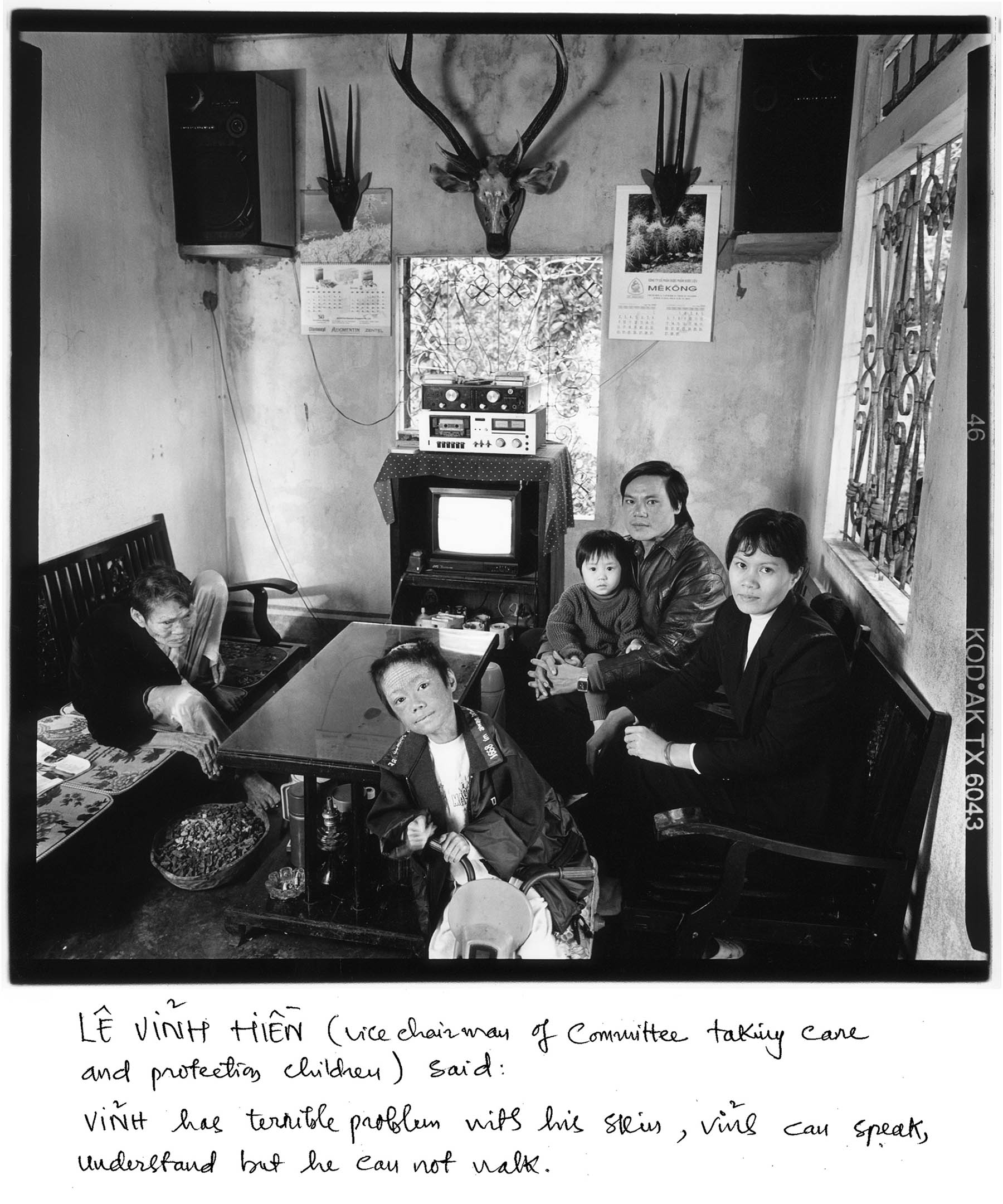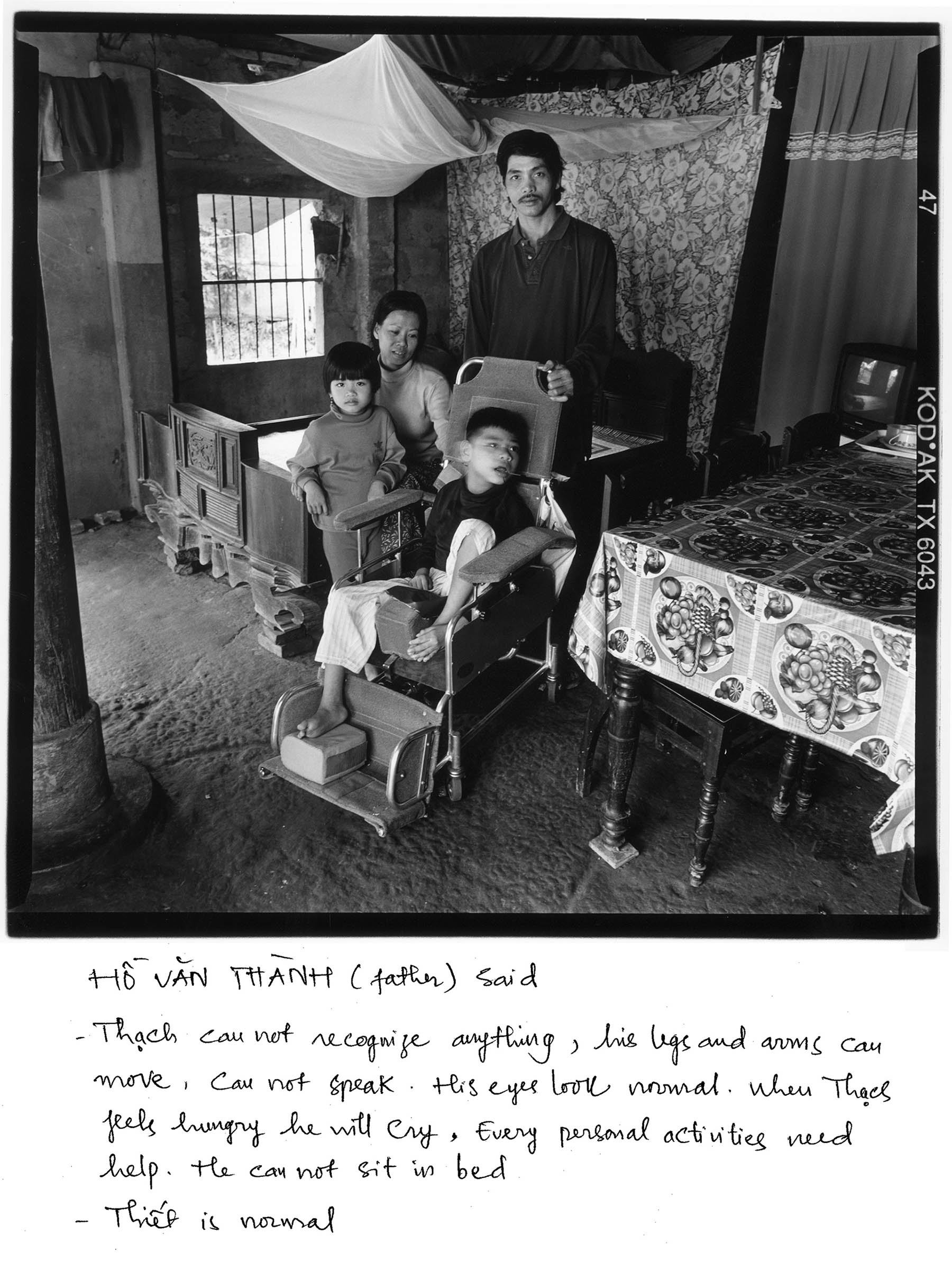The American National Academy of Sciences (NAS) concluded that there is sufficient evidence of an association between Agent Orange/dioxin and several diseases, e.g. Hodgkin’s disease, Non-Hodgkin’s Lymphoma and soft-tissue sarcoma, and suggestive evidence of an association with other cancers and diseases. The American Veterans Organisation (VA) has a long list of diseases that entitle veterans to benefits. American veterans sued seven of the producing firms (a.o. Dow Chemicals), and the parties finally agreed on a compensation payment of 180 million $ US (of which 100 million went to the lawyers).
The Canadian Hatfield Consultants Ltd has done research on the presence of dioxin in Vietnamese soil, animal and (some) human blood samples. Testing human blood is a costly affair: about 1000 $ US per sample. They concluded that in the mid-nineties, more than 20 years after the last spraying flight, there were still considerable traces to be found – also in humans born after 1971 (explanation given: it entered through the food chain). The question of effects of dioxin on human birth defects is also controversial. Laboratory tests led to the conclusion that dioxin can lead to birth defects and genetic damage in animals. The U.S. Institute of Medicine in their 1996 update (IOM 1996), states that there is “limited/suggestive evidence of an association between” Agent Orange exposure and the birth defect spina bifida.
A report of the 1993 Hanoi conference on herbicides used during the war states the conclusions from several investigations:
high rates (2.8%) of congenitally malformed babies in a heavily sprayed area in Song Be province (Yamamoto et al. 1994).
Higher rates of infant mortality in sprayed villages (Dai et al. 1994b).
Increased rates of birth defects and abnormal pregnancies in families of veterans exposed to herbicides (Dai et al. 1994b).
One of the findings, from the Joint Vietnam-Russia Tropical Research Centre in Hanoi, that were published in the 15th International Symposium on Dioxins in 1995 is an increased incidence of congenital malformations and stillbirths in heavily sprayed areas. The Vietnamese medical scientist, dr. Nguyen Viet Nhan (vice-chairman of the department of human physiology in Hue) did an investigation in Cam Lo district (where the photos in this reportage were made), Quang Tri province, comparing the results with those from a control group in Hue city. The Vietnamese lack of means (funds, equipment) forced him to concentrate on congenital birth defects that can be visually diagnosed: cleft palate, cataract, inguinal hernia, clubfoot, polydactily and others. Some of his outcomes: cleft palate 3 times, cataract 6, inguinal hernia 8, clubfoot 4, polydactily 3 times as high in Cam Lo. As an extra he also investigated two symptoms that are more difficult to analyse: cerebral palsy (spasticism) and mental retardation (both due to brain damage): 2 and 3 times as high in Cam Lo.
The Vietnamese studies may not always be up to Western scientific standards. Yet all in all, there seem to be strong indications that the post-war generation in heavily-sprayed areas runs an elevated risk of birth defects. But final proof may never come forward. As dr. Nhan said, it makes more sense to use the limited funds for treatment of these children – whatever the cause of their handicap may be – than for expensive research.
All of these photos were taken in Cam Lo district, just South of the former Demilitarized Zone (the border between Nort and South Vietnam), an area of heavy spraying and high rates of birth defects. The texts are short descriptions of the patients’ conditions by family members, handwritten by my interpreter Dai.















